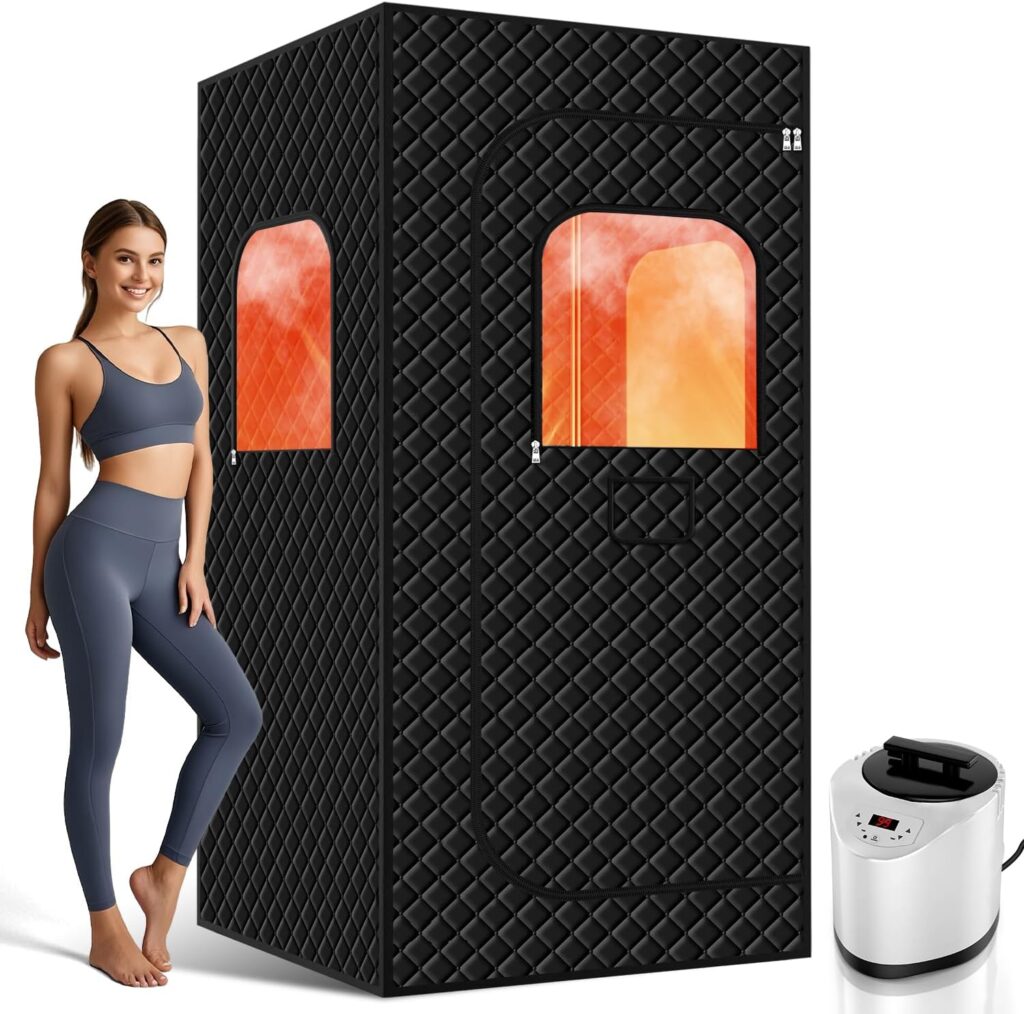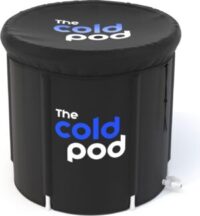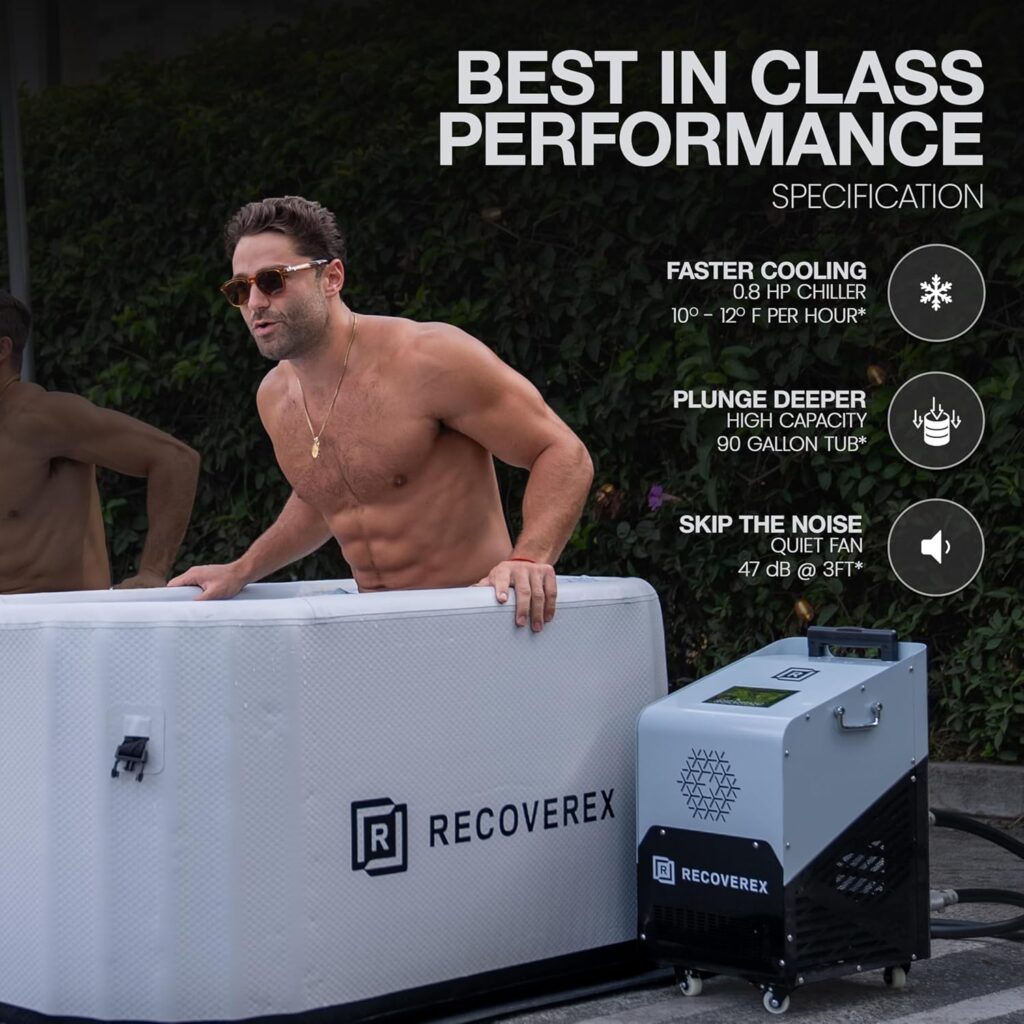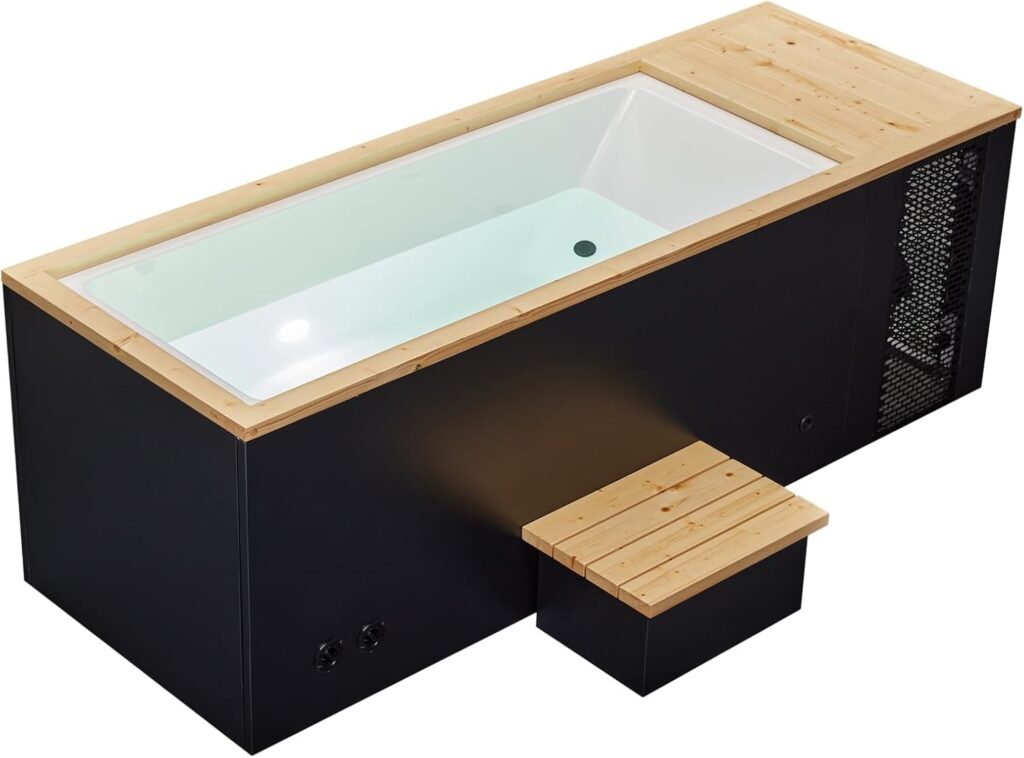Contrast therapy has become a game-changer in the wellness routines of many enthusiasts. By alternating between heat exposure and cold immersion, they have experienced incredible benefits for both their physical and mental well-being.
In this comprehensive guide, I’ll share everything I’ve learned about harnessing the power of portable saunas and ice baths to improve your health and recovery.
Note: As an Amazon Associate, I may earn commissions from qualifying purchases.
Understanding Contrast Therapy
Contrast therapy involves exposing your body to alternating periods of heat and cold. This practice triggers specific physiological responses that can enhance recovery, reduce inflammation, boost circulation, and provide a host of other benefits.
The Heat Exposure Phase
When you step into a portable sauna or other heat source, your body undergoes several important changes:
Vasodilation: Blood vessels near your skin’s surface expand, increasing blood flow throughout your body. This enhanced circulation delivers oxygen and nutrients more efficiently to your muscles and organs.
Muscle Relaxation: Heat penetrates deep into your muscles, helping them relax and release tension. This is particularly useful if you’re dealing with chronic muscle tightness or recovering from intense physical activity.
Sweating: As your body temperature rises, you begin to sweat. This natural cooling mechanism helps eliminate toxins and impurities through your skin.
Heat Shock Protein Production: Exposure to heat triggers the production of heat shock proteins, which play a crucial role in cellular repair and protection against stress.
The Cold Exposure Phase
When you transition to cold exposure, such as an ice bath or cold plunge, your body responds in different ways:
Vasoconstriction: Blood vessels constrict, redirecting blood flow to vital organs. This can help reduce inflammation and swelling in injured areas.
Pain Relief: Cold exposure can numb nerve endings, providing temporary relief from pain and discomfort.
Hormone Release: Cold immersion stimulates the release of norepinephrine, a hormone that can boost mood and alertness.
Metabolic Boost: Your body works harder to maintain core temperature in cold conditions, potentially increasing calorie burn.
Benefits of Contrast Therapy
The combination of heat and cold exposure offers a wide range of benefits that can positively impact various aspects of your health and well-being:
Enhanced Recovery
Contrast therapy can significantly reduce muscle soreness and speed up recovery after intense physical activity. The alternating vasodilation and vasoconstriction act like a pump, improving circulation and flushing out metabolic waste products.
Improved Circulation
The repeated expansion and contraction of blood vessels help improve overall cardiovascular health and blood flow throughout the body. This enhanced circulation can lead to better nutrient delivery and waste removal at the cellular level.
Stress Reduction
The practice of contrast therapy can be deeply relaxing, helping to lower cortisol levels and promote a sense of calm and well-being. Many people find that the alternating sensations of heat and cold create a meditative experience that helps clear the mind and reduce anxiety.
Immune System Boost
Regular contrast therapy sessions may help strengthen the immune system by stimulating the production of white blood cells and improving lymphatic circulation. This can potentially lead to increased resistance to common illnesses and faster recovery times when you do get sick.
Better Sleep
Many people report improved sleep quality after incorporating contrast therapy into their routines. The relaxation and temperature regulation effects can contribute to more restful nights.
The practice may help reset your body’s circadian rhythm, making it easier to fall asleep and wake up naturally.
Improved Skin Health
The alternating hot and cold exposure can help improve skin tone and texture by promoting blood flow to the skin and encouraging the elimination of toxins through sweating. Some people notice a healthy glow and reduced appearance of cellulite with regular contrast therapy sessions.
Mental Clarity
The invigorating effects of contrast therapy can help sharpen focus and improve cognitive function, making it an excellent tool for mental performance. The practice may help clear brain fog and increase alertness, potentially leading to improved productivity and creativity.
Pain Management
For those dealing with chronic pain or inflammation, contrast therapy can offer natural relief by reducing swelling and numbing pain receptors. The alternating temperatures can help break the pain cycle and provide temporary relief from conditions like arthritis or fibromyalgia.
Metabolic Boost
The thermogenic effect of alternating between hot and cold can potentially increase calorie burn and support weight management efforts. While not a replacement for a healthy diet and exercise, contrast therapy may complement your existing fat loss or maintenance strategies.
Hormonal Balance
Contrast therapy may help regulate hormone production, potentially benefiting those dealing with hormonal imbalances. Some studies suggest that the practice can influence the production of hormones like cortisol, testosterone, and growth hormone.
Setting Up Your Home Contrast Therapy System
Creating a contrast therapy setup at home doesn’t have to be complicated or expensive. Here’s how you can get started:
Click on the links below to learn more about these products.
Choosing Your Equipment
There are many choices for your at-home sauna, from a hot shower to infrared sauna blankets (that have many health benefits even without the cold therapy) to collapsible sauna tents. These options are space-efficient and easy to store when not in use.

Far Infrared Sauna Blankets: The best seller LifePro Far Infrared Sauna Blanket has excellent reviews, is portable, and is about the middle of the price ranges. Far infrared technology penetrates deep into body tissues, promoting increased circulation, detoxification, muscle relaxation, and improved skin health. Regular use can help with post-workout recovery, stress reduction, improved sleep quality, and skin rejuvenation. Sweat out toxins and calm your body & mind for at-home spa sessions before your cold plunge.

Collapsible Sauna Tent: The portable sauna tents provide more of a real sauna experience. Sauna Box has almost 300 reviews – all five star! It sets up quickly indoors or outdoors, fits in almost any room, and offers a versatile solution for heat/cold therapy enthusiasts. This system is designed to create an optimal sauna environment in a compact, user-friendly package.
There are smaller tents if you prefer. Consider factors like heat-up time, maximum temperature, and ease of cleaning when making your selection.
Cold Plunge Solution: While a dedicated cold plunge tub is ideal, you can start with a large plastic tub filled with cold water and ice. Some people even use their bathtubs for cold immersion. If you have outdoor space, a small inflatable pool can also work well. I’ll give you three examples of cold plunge tubs depending on your space, commitment, and how much you want to spend. Cost of these tubs vary quite a bit from below $100 to thousands of dollars. So just take a look, gather the information and decide what is right for you. They are all good and will work for cold plunge and contrast therapy.

The Cold Pod Tub If you’re committed to adding cold plunging to your routine, investing in a cold plunge tub might be a good idea. The Cold Pod Ice Bath Tub is an affordable option that’s highly-rated on Amazon. It’s portable, easy to set up, and designed to retain the right temperature for your plunge sessions. This can be especially useful if you want to bring the spa experience right into your home.

Recoverex Cold Plunge Tub with Water Treatment Kit – People love that this tub has a beautiful sleek design, is comfortable for any size, is easy and fast to set-up and the quality of the tub is A*.

OCEAN FUTURE Ice Bath Tub – This Electric cold plunge tub features an integrated chiller system, providing a beautiful, complete and convenient cold therapy experience for you.

Temperature Control: Invest in a reliable thermometer to watch water temperature for your cold plunge. This will help you maintain consistent and safe temperatures for your sessions. ThermoPro Digital Pool Thermometer is known for its accuracy and plungers love its large backlit design.
Timer: A simple kitchen timer or smartphone app can help you track your exposure times accurately. This is crucial for maintaining the right balance between heat and cold exposure.
Creating Your Contrast Therapy Space
Designate a specific area in your home for your contrast therapy sessions. This could be a spare room, a corner of your bedroom, or even an outdoor space if weather allows. Ensure the area is well-ventilated and has easy access to both your heat and cold sources.
Consider adding some ambient lighting, comfortable seating for rest periods, and a non-slip mat for safety when transitioning between hot and cold. Having a dedicated space can help you mentally prepare for your sessions and make the practice feel more like a ritual.
Conducting a Contrast Therapy Session
Now that you have your setup ready, let’s walk through a typical contrast therapy session:
- Begin with Heat: Start your session with 10-15 minutes in the pre-heated portable sauna or blanket.
Focus on deep, relaxed breathing as you allow your body to warm up.
Use this time to mentally prepare for the session and set any intentions for your practice.
- Transition to Cold: Quickly move to your cold plunge, aiming for 1-3 minutes of cold exposure.
Take slow, controlled breaths to manage the initial shock.
Remember that the discomfort is temporary and focus on the invigorating sensation.
- Return to Heat: Go back to the sauna for another 5-10 minutes, allowing your body to warm up again. Notice how your body feels different after the cold exposure.
You may experience a tingling sensation or increased awareness of your skin.
- Alternate: Continue alternating between heat and cold, gradually increasing your cold exposure time as you become more accustomed to the practice.
Aim for 3-5 cycles in total, depending on your time availability and comfort level.
- End with Cold: Finish your session with a final cold plunge to invigorate your system.
This helps close your pores and leaves you feeling refreshed and energized.
- Rest and Hydrate: After your session, take time to rest and rehydrate.
Listen to your body and adjust the intensity and duration of future sessions accordingly.
You may want to have a warm towel or robe ready for this cool-down period.
Safety First: Best Practices for Contrast Therapy
While contrast therapy can be incredibly beneficial, it’s essential to approach it with caution and awareness:
Start Slowly: Begin with shorter exposure times and gradually increase as your body adapts. This allows your cardiovascular system to adjust to the temperature changes safely.
Listen to Your Body: If you feel lightheaded, dizzy, or uncomfortable at any point, stop the session immediately. It’s important to respect your body’s limits and not push too hard, especially when you’re first starting out.
Stay Hydrated: Drink plenty of water before, during, and after your contrast therapy sessions to replace fluids lost through sweating. Consider adding electrolytes to your water to maintain proper mineral balance.
Monitor Temperature: Ensure your sauna and cold plunge temperatures are within safe ranges. Aim for 110-130°F (43-54°C) for the sauna and 50-59°F (10-15°C) for the cold plunge.
Use a reliable thermometer to check temperatures regularly.
Avoid Alcohol: Never engage in contrast therapy while under the influence of alcohol or drugs. These substances can impair your judgment and ability to regulate body temperature, increasing the risk of accidents or health complications.
Consult a Healthcare Professional: If you have any pre-existing health conditions, especially those related to heart health or blood pressure, ask with your doctor before starting a contrast therapy practice.
Enhancing Your Contrast Therapy Experience
To maximize the benefits of your contrast therapy sessions, consider incorporating these complementary practices:
Breathwork
Practice deep, controlled breathing during your sessions to enhance relaxation and manage the intensity of temperature changes. Try techniques like box breathing (inhale for 4 counts, hold for 4, exhale for 4, hold for 4) or alternate nostril breathing to focus your mind and regulate your nervous system.
Meditation
Use your time in the sauna or cold plunge as an opportunity for mindfulness meditation, focusing on your breath and bodily sensations. This can help you stay present and make the most of each moment in your practice.
You might try a body scan meditation, progressively relaxing each part of your body from head to toe.
Aromatherapy
Add essential oils like eucalyptus or lavender to your sauna for an extra layer of relaxation and respiratory support. Be sure to use high-quality, pure essential oils and follow proper dilution guidelines.
Some people find that certain scents, like peppermint or citrus, can enhance their mental clarity during sessions.
Gentle Stretching
Incorporate light stretching during your heat exposure to enhance muscle relaxation and flexibility. Focus on gentle, static stretches rather than dynamic movements.
This can be particularly useful if you’re using contrast therapy as part of your recovery routine after workouts.
Tracking Your Progress
Keep a journal of your contrast therapy sessions, noting duration, temperatures, and how you feel before and after each session. This will help you identify patterns and improve your practice over time.
Consider tracking metrics like:
- Duration of heat and cold exposures
- Body temperature before and after sessions
- Energy levels throughout the day
- Sleep quality
- Muscle soreness or pain levels
- Mood and mental clarity
You might also want to take progress photos or measurements if you’re using contrast therapy as part of a fitness or weight management program.
Overcoming Common Challenges
Cold Tolerance
Gradually increase cold exposure time and use visualization techniques to manage discomfort. Remember that cold tolerance improves with practice.
Start with shorter exposures and focus on controlled breathing to help you stay calm during the cold plunge.
Time Constraints
Even short 10-15 minute sessions can be useful. Consistency is key, so find a schedule that works for you.
Consider incorporating contrast therapy into your morning routine or as a post-workout recovery practice.
Motivation
Set specific goals for your contrast therapy practice and remind yourself of the benefits you’re experiencing. Keep your “why” in mind – whether it’s improved recovery, stress reduction, or overall health.
Joining online communities or finding a contrast therapy buddy can help keep you accountable and motivated.
Advanced Contrast Therapy Techniques
As you become more comfortable with basic contrast therapy, you might want to explore some advanced techniques:
Extended Cold Exposure
Gradually work up to longer cold plunges, aiming for 5-10 minutes in cold water. This can help build mental resilience and may offer additional benefits for inflammation reduction and metabolism boosting.
Hot-Cold-Hot-Cold Cycles
Instead of ending with cold, try finishing your session with a brief heat exposure followed by a very short cold plunge. This technique, sometimes called “thermal shocking,” can leave you feeling incredibly invigorated.
Contrast Showers
If you don’t have access to a full contrast therapy setup, you can still benefit from alternating hot and cold water in your shower. Start with 1-2 minutes of hot water, followed by 30 seconds of cold, and repeat for 3-5 cycles.
Facial Contrast Therapy
Use hot and cold compresses on your face to improve skin tone and reduce puffiness. This can be a great addition to your skincare routine or a quick pick-me-up during the day.
Integrating Contrast Therapy with Other Wellness Practices
Contrast therapy can complement many other wellness practices:
Exercise Recovery
Use contrast therapy after intense workouts to reduce muscle soreness and speed up recovery. The improved circulation can help flush out lactic acid and reduce inflammation.
Stress Management
Combine contrast therapy with other stress-reduction techniques like yoga or journaling for a comprehensive approach to mental well-being.
Sleep Optimization
Incorporate contrast therapy into your evening routine to help regulate your body temperature and prepare for restful sleep. Just be sure to finish your session at least an hour before bedtime.
Detoxification Support
While your body has it’s own detoxification systems, contrast therapy can support these processes by promoting sweating and improving circulation. Pair this with a healthy diet and adequate hydration for best results.
The Future of Contrast Therapy
As interest in contrast therapy grows, we’re likely to see more innovations in home-use equipment and techniques. Keep an eye out for:
- Smart saunas and cold plunges with app integration for precise temperature control and session tracking
- Wearable devices that can simulate some of the effects of contrast therapy
- More research into the long-term benefits of regular contrast therapy practice
Step into your future self and allow yourself to experience the multiple benefits of contrast therapy!